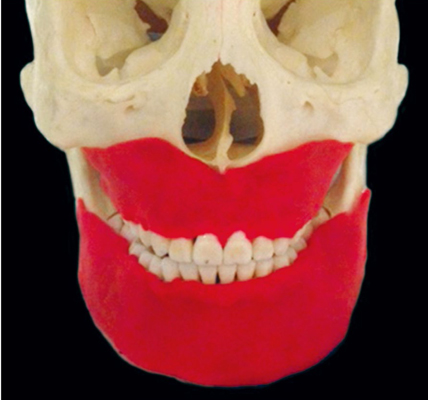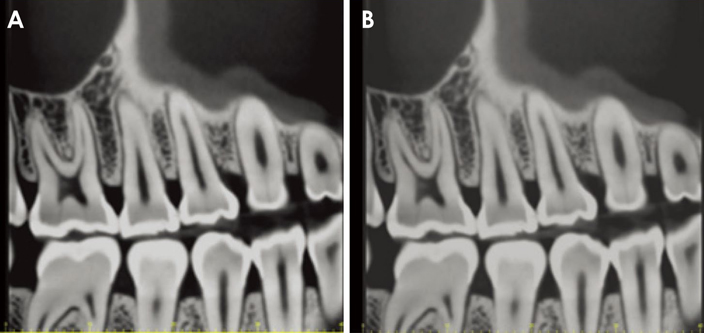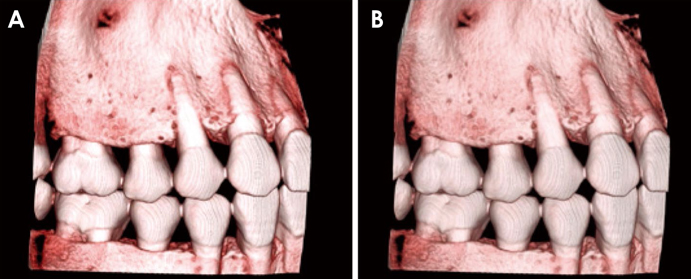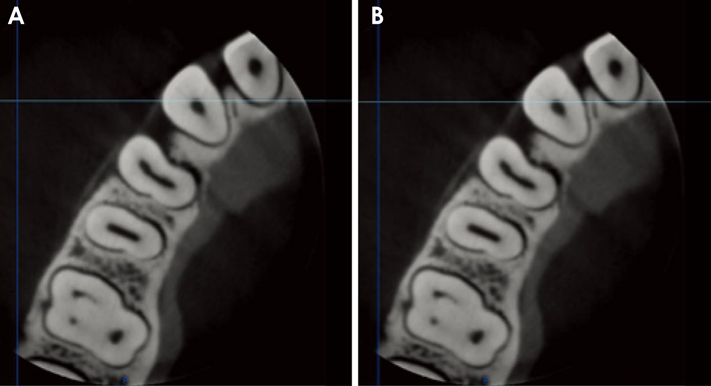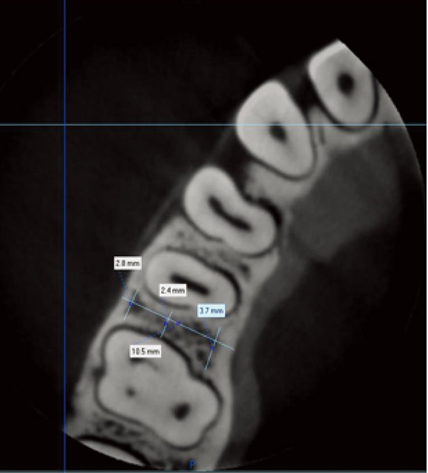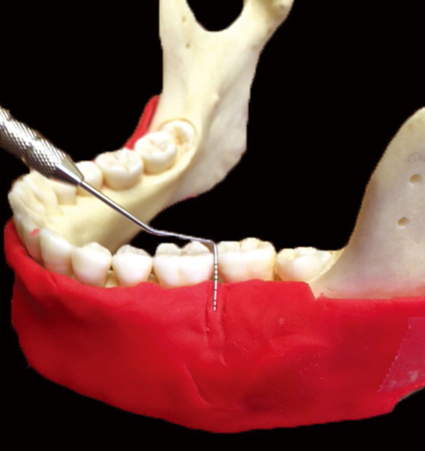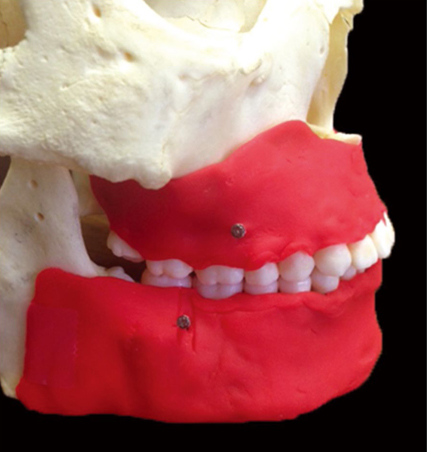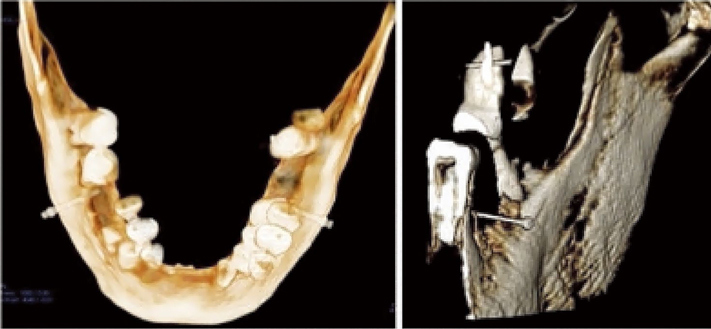Imaging Sci Dent.
2017 Sep;47(3):141-147. 10.5624/isd.2017.47.3.141.
Diagnostic efficacy of a modified low-dose acquisition protocol for the preoperative evaluation of mini-implant sites
- Affiliations
-
- 1Division of Oral and Maxillofacial Radiology, University of Connecticut School of Dental Medicine, Farmington, CT, USA. tadinada@uchc.edu
- 2School of Dental Medicine, University of Connecticut School of Dental Medicine, Farmington, CT, USA.
- 3Division of Orthodontics, University of Connecticut School of Dental Medicine, Farmington, CT, USA.
- KMID: 2390078
- DOI: http://doi.org/10.5624/isd.2017.47.3.141
Abstract
- PURPOSE
The objective of this study was to compare the outcomes of surgical mini-implant placement when potential mini-implant sites were scanned using a lower-dose 180° acquisition protocol versus a conventional 360° acquisition protocol.
MATERIALS AND METHODS
Ten dentate human skulls were used to provide sites for potential mini-implant placement. The sites were randomly divided into 2 groups: 360° and 180° cone-beam computed tomography (CBCT) acquisition protocols. A small-volume 180° CBCT scan and a 360° CBCT scan of each site were acquired using a Morita Accuitomo-170 CBCT machine and then a mini-implant was placed. A follow-up 360° CBCT scan was done as a gold standard to evaluate the location of the mini-implant and root perforation. Two raters evaluated the scans.
RESULTS
Ninety-eight percent of the mini-implants placed did not perforate any root structure. Two percent of the sites had an appearance suggestive of perforation. On a Likert scale, both raters agreed that their subjective evaluation of the diagnostic quality of the protocols, ability to make and read measurements of the sites, and preferences for the specified diagnostic task were comparable. The Cohen kappa showed high inter-rater and intra-rater agreement.
CONCLUSION
In this ex vivo study, we found that the 180° rotational acquisition was as effective as the conventional 360° rotational acquisition for the preoperative evaluation of potential mini-implant sites.
Figure
Reference
-
1. Upadhyay M, Yadav S, Patil S. Mini-implant anchorage for en-masse retraction of maxillary anterior teeth: a clinical cephalometric study. Am J Orthod Dentofacial Orthop. 2008; 134:803–810.
Article2. Upadhyay M, Yadav S, Nagaraj K, Patil S. Treatment effects of mini-implants for en-masse retraction of anterior teeth in bialveolar dental protrusion patients: a randomized controlled trial. Am J Orthod Dentofacial Orthop. 2008; 134:18–29.e1.
Article3. Bonnick AM, Nalbandian M, Siewe MS. Technological advances in nontraditional orthodontics. Dent Clin North Am. 2011; 55:571–584.
Article4. McCabe P, Kavanagh C. Root perforation associated with the use of a miniscrew implant used for orthodontic anchorage: a case report. Int Endod J. 2012; 45:678–688.
Article5. Papageorgiou SN, Zogakis IP, Papadopoulos MA. Failure rates and associated risk factors of orthodontic miniscrew implants: a meta-analysis. Am J Orthod Dentofacial Orthop. 2012; 142:577–595.e7.
Article6. Poggio PM, Incorvati C, Velo S, Carano A. “Safe zones” a guide for miniscrew positioning in the maxillary and mandibular arch. Angle Orthod. 2006; 76:191–197.7. Brisceno CE, Rossouw PE, Carrillo R, Spears R, Buschang PH. Healing of the roots and surrounding structures after intentional damage with miniscrew implants. Am J Orthod Dentofacial Orthop. 2009; 135:292–301.
Article8. Hembree M, Buschang PH, Carrillo R, Spears R, Rossouw PE. Effects of intentional damage of the roots and surrounding structures with miniscrew implants. Am J Orthod Dentofacial Orthop. 2009; 135:280.e1–280.e9.
Article9. Cope JB. Temporary anchorage devices in orthodontics: a paradigm shift. Semin Orthod. 2005; 11:3–9.
Article10. Landin M, Jadhav A, Yadav S, Tadinada A. A comparative study between currently used methods and small volume-cone beam tomography for surgical placement of mini implants. Angle Orthod. 2015; 85:446–453.
Article11. Pauwels R, Beinsberger J, Collaert B, Theodorakou C, Rogers J, Walker A, et al. Effective dose range for dental cone beam computed tomography scanners. Eur J Radiol. 2012; 81:267–271.
Article12. Ludlow JB, Davies-Ludlow LE, White SC. Patient risk related to common dental radiographic examinations: the impact of 2007 International Commission on Radiological Protection recommendations regarding dose calculation. J Am Dent Assoc. 2008; 139:1237–1243.13. Scarfe WC, Farman AG. What is cone-beam CT and how does it work? Dent Clin North Am. 2008; 52:707–730.
Article14. Lennon S, Patel S, Foschi F, Wilson R, Davies J, Mannocci F. Diagnostic accuracy of limited-volume cone-beam computed tomography in the detection of periapical bone loss: 360° scans versus 180° scans. Int Endod J. 2011; 44:1118–1127.
Article15. Bechara B, McMahan CA, Nasseh I, Geha H, Hayek E, Khawam G, et al. Number of basis images effect on detection of root fractures in endodontically treated teeth using a cone beam computed tomography machine: an in vitro study. Oral Surg Oral Med Oral Pathol Oral Radiol. 2013; 115:676–681.
Article16. Yadav S, Palo L, Mahdian M, Upadhyay M, Tadinada A. Diagnostic accuracy of 2 cone-beam computed tomography protocols for detecting arthritic changes in temporomandibular joints. Am J Orthod Dentofacial Orthop. 2015; 147:339–344.
Article
- Full Text Links
- Actions
-
Cited
- CITED
-
- Close
- Share
- Similar articles
-
- Comparison of tube-assisted mapping biopsy with digital single-operator peroral cholangioscopy for preoperative evaluation of biliary tract cancer
- Mini-implant with additional retentive structure by using digital method
- Recurrence after Modified Mini-Flap Technique for Pterygium Surgery
- Low-Dose Fluoroscopy Protocol for Diagnostic Cerebral Angiography
- Evaluation of the effective dose and image quality of low-dose multi-detector CT for orthodontic treatment planning

